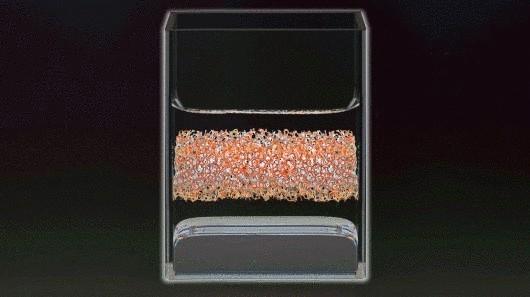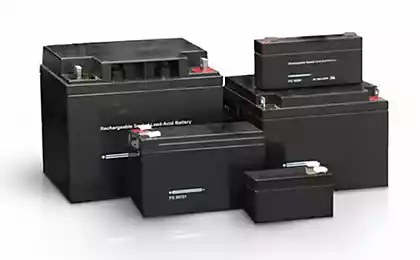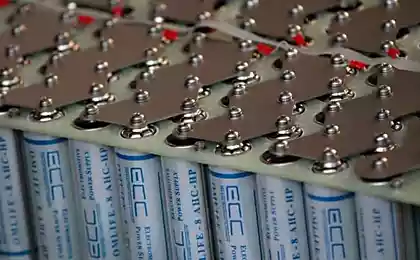440
Scientists have developed an improved liquid battery with long service life

The ability to effectively store energy is one of the most important factors in the development of technologies for producing energy from renewable sources. In this direction, and has a team of researchers at the Massachusetts Institute of technology (MIT), which recently announced the development of a new liquid battery system, which not only prolongs the service life of such a device, but will significantly reduce the cost of wind and solar energy, making it more competitive compared to traditional energy sources.
Donald Sadoway, chemistry Professor of materials science at mit, within several years studying the potential of using liquid batteries to mains power. These batteries consist of liquid materials of different densities which provide a natural separation of the layers and create the electric field between them.

The existing prototype liquid battery that uses magnesium and antimony in liquid form as electrodes and molten salt as electrolyte, only works at a temperature of about 700 ° C. But through further research on the improvement of battery, scientists have discovered that the substitution of magnesium for lithium in one electrode, and antimony, a mixture of lead and antimony on the other, allowed to reduce the working temperature of the battery is up to 450 – 500 ° C.
According to the researchers, lowering the operating temperature of the liquid of the battery will provide not only reduced the overall system cost of energy storage, but also longer life. According to the test results and computer simulation, even after 10 years of daily cycles of charging and discharging the battery will be able to maintain about 85 percent of its original capacity. And the initial capacity of this liquid battery is about 70 percent of the average power pumped storage plants.
Professor Sadoway and his team now plan to study other metals in a liquid battery, with the aim of further reducing its cost and operating temperature and increase the capacity.
Source: www.cheburek.net
3D without glasses — there is a solution
Scientists have created the smallest microphone, made from a single molecule























